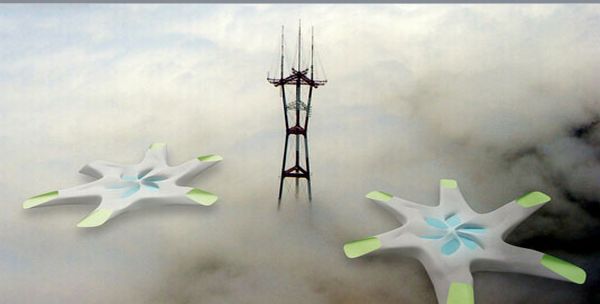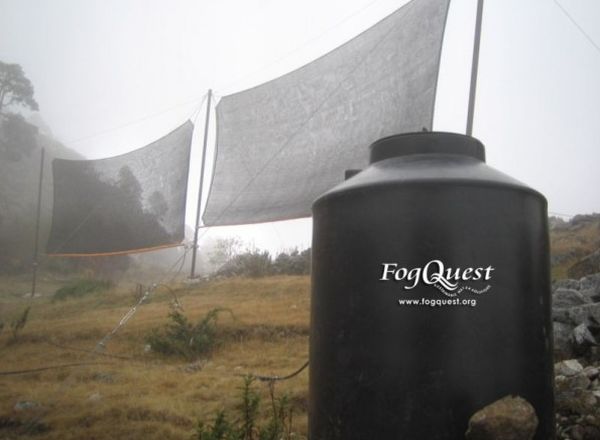
What is happening right now?
A startling figure provided by WHO/UNICEF Joint Monitoring Programme for Water Supply and Sanitation reveals that around 884 million people of the world do not have access to safe drinking water. Only 46 percent of the people in Africa have access to safe drinking water, which makes it less than even a minimum majority. The problem lies in the fact that even if 71 percent of earth’s surface is covered in water, an overwhelming 97 percent of it is salt water. The remaining 3 percent of limited freshwater sources like aquifers, surface waters and the atmosphere forms the drinking water lifeline for the major section of the growing human population.
In a bid to solve at least part of the water crisis by utilizing the high potentiality of atmospheric freshwater sources, measures regarding fog harvesting began to take shape right from the 90’s. For example, a project by Chile’s National Forest Corporation (CONAF) and Catholic University of Chile in 1992 initially achieved a spectacular success with an average production of 15,000 liters of water per day at the village of Chungungo.
Trends:
1. Fog harvesting technique contrived by Shreerang Chhatre:

Supposedly inspired by the physiology of the Stenocara gracilipes, a beetle found in the Namib desert, this ‘naturalistic‘ fog harvesting mechanism was devised by Shreerang Chhatre, an engineer at MIT. Basically composed of a fence-like mesh panel, the contraption collects water from the condensation of fog, and transfers the resultant amount to a storage receptacle. The mesh like structure in turn accentuates upon the degree of total water absorption.
2. Water harvested from clouds in rural South Africa:

A simple idea devised by the University of South Africa (UNISA) conveniently caters to a Tshanowa junior primary school in Venda, South Africa. Previously at the school there was no facility for even a drop of water to drink, let alone for washing or planting. But with the installation of this fascinating system, which initially consisted of only a rudimentary fog screen upheld by poles, water is collected at an astounding rate of 3,800 liters on rainy days. The water collected now is more than enough to meet the needs of the local community as well as the school and even an adjoining vegetable garden.
3. The Chungungo experiment:

Chungungo is located in one of the planet’s driest regions — the Atacama desert, and receives an average of less than 5 cm of rainfall annually. So adamantly challenging the natural conditions, in 1992 one of the first fog harvesting devices was installed in this village. It was the fruit of a joint collaboration of Chile’s National Forest Corporation (CONAF) and Catholic University of Chile. And six years later with the help of 80 fog collectors, village residents were enjoying an average of 10,000-15,000 liters of fresh drinking water each day, which amounts to an average of 35 liters per person! In comparison, in the US, the reference daily intake (RDI) for water is 3.7 liters per day for adults.
The concept:
The basic concept of an effective fog collecting system should combine the attributes of both water absorption and transmission (for later collection) like the physiological characteristic of the Namib desert beetle. Generally the use of mesh-like components is encouraged because it has a higher degree of water absorptive quality. Whereas in the case of completely impermeable objects – wind currents are created on the surface that tend to drag water droplets away from it.
The advantage:
All of the above trends examined catered to the far flung places of the world where water supply related problems have not only plagued society but also affected the overall economy. Now fog harvesting can provide the right alternative solution to sustainability in such cases, especially in view of its relatively uncomplicated requirements and DIY essence. Robert Schemenauer, the executive director of Fog Quest, says:
As the number of people and businesses in the world increases and rainfall stays the same, more people will be looking for alternatives (like this).
The impact:
Interestingly data suggests that among the scarce 3 percent of freshwater sources, around one-third of it is found in the atmosphere. So logically almost 33 percent of total human water consumption can come from such atmospheric water compositions. Hence we see in the long run that even if fog harvesting systems are in the nascent stage, it has future potential to solve many of our water scarcity woes, especially in relation to about 900 million people.




